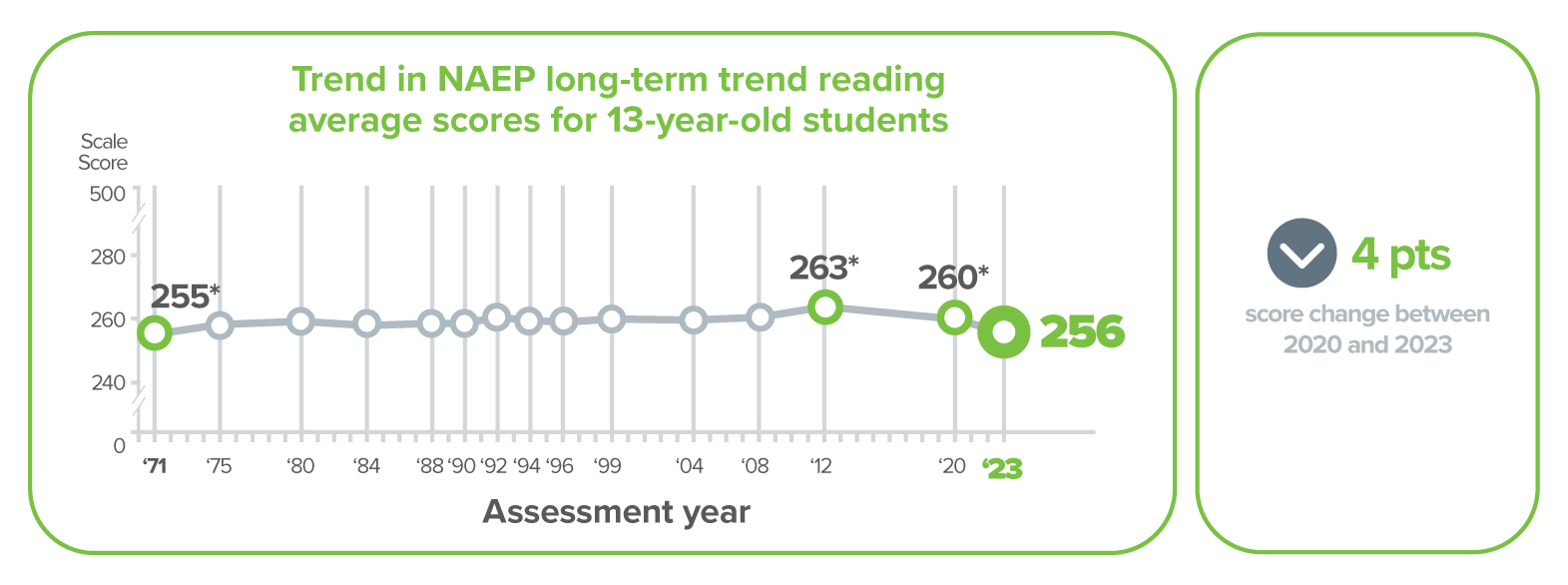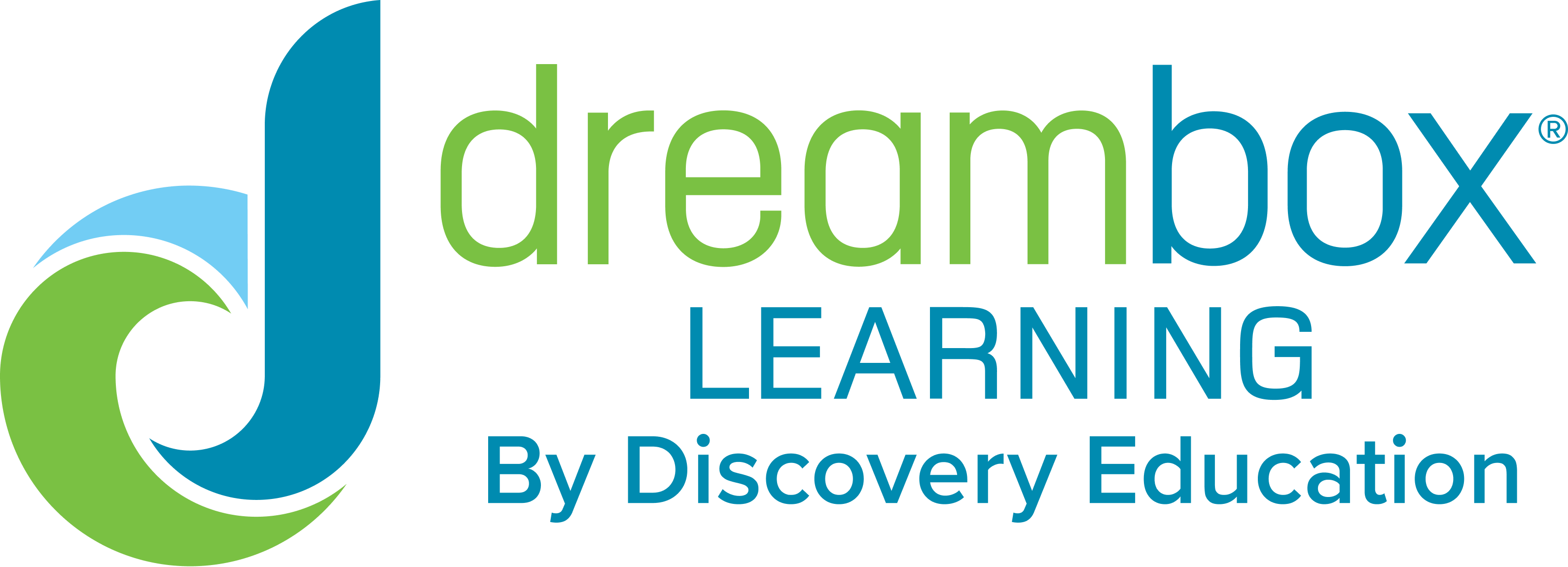Blogs
2023 LTT NAEP Reading Scores: How can educators help 13-year-old students regain proficiency?
July 05, 2023
SHARE NOW
Background
2022 MAIN NAEP SCORES
In 2022 the National Center for Education Statistics (NCES) released two sets of National Assessment of Educational Progress (NAEP) scores. The main NAEP scores, released in October, provide a common measure of student achievement in various subjects for students in 4th, 8th, and 12th grade. Since the 1990s, students in these grades have taken this frequently updated, digitally-based assessment every two years. You can read about the results from the latest assessment here.
2022 NAEP LTT SCORES: 9-YEAR-OLD STUDENTS
The second set of scores NCES released was from a special administration of the NAEP long-term trend (NAEP LTT) reading and mathematics assessments to examine student achievement during the COVID-19 pandemic. NAEP LTT assessments are administered to students sampled by grade and on paper and LTT assessments are less frequently updated and less reflective of changes in the curriculum than the main NAEP. Results from over 7,000 9-year-old students were alarming, to say the least. You can read about these results here.
2023 NAEP LTT SCORES: 13-YEAR-OLD STUDENTS
June 2023 NAEP LTT scores for 13-year-old students in both math and reading are worrisome. Still, there is always hope that educators can help right the ship and adopt the right approaches and solutions to move reading proficiency in a positive direction.
Fast facts about the latest reading scores:

NAEP Reading Scores
A nationally representative sample of 8,700 13-year-olds showed that compared with the previous LTT assessment in 2019–2020:
-
The average reading score declined 4 points.
-
Compared with 2012, the average reading score declined 7 points.
-
Reading scores declined at all achievement percentiles.
-
In 2023, struggling readers in the 10th percentile scored 6 points lower than they did in 1971.
-
Survey data from the assessment showed that 14% of students reported reading for fun almost every day.
-
This percentage was 3 percentage points lower than 2020, and 13 percentage points lower than 2012.
-
Data also indicated that higher-performing students were more likely to read for fun.
-
51% of students at or above the 75th percentile reported reading for fun at least once per week.
-
42% of students below the 25th percentile reported never or hardly ever reading for fun.
How can educators respond?
There is no silver bullet that will fix everything all at once, but there are a few areas that educators can start to address.
A hidden hurdle: silent reading fluency
When students learn to read in early grades, teachers are trained to listen to students for struggles during oral reading. However, students who struggle to read silently may not demonstrate easy-to-spot signs. Researchers have studied eye-movement recordings of students reading, and noticed that students who read inefficiently make many extra fixations or eye stops. They move very short distances and make regressive eye movements. They’ll move backward to check words or confirm what they saw. A nonproficient reader invests a lot of time trying to move their eyes to the right place within the text. Reading becomes exhausting and making sense of the content becomes difficult. All of this extra energy is largely invisible to teachers. Without insight into these inefficiencies, teachers might not intervene, and students will continue to struggle in classes for years.
Students use silent reading daily – when they take quizzes and benchmark tests, complete assignments, study for an upcoming discussion, or simply follow directions in class. They also use the skill during high-stakes exams, such as end-of-year assessments, standardized tests, and entrance exams, like the ACT or SAT. Students use silent reading skills every day, across all areas, and as a result nonproficient reading affects the ability to learn in ALL subject areas.
Data has indicated that silent reading fluency is a common struggle for many students. Seventy percent of nonproficient students are not fluent in silent reading, and 30% of proficient students are not fluent in silent reading. Becoming a fluent reader allows a student to focus more deeply on comprehension, read increasingly complex texts, and become a more confident and engaged reader. Educators can leverage technology to guide and support this work and provide students with what they need the moment they need it.
Students must practice the right lessons to become better readers. Technology can match students with the right content for their fluency levels and adapt and adjust to ensure they remain within their zone of proximal development. As they build skills in every area, just-in-time technology should provide personalized scaffolds and support based on student behavior and needs.
Fluency is a gateway to comprehension and motivation. When the eyes can take in text at a comfortable, adequate rate, it helps free up energy for comprehension. And, when students understand material, they feel confident and motivated to continue to read.
Motivation: agency, choice, and the content each student loves
The NAEP LTT scores for reading habits confirms what many educators and researchers have known for years– students’ perceptions about themselves as readers can affect not only their overall levels of reading effectiveness, but also the extent to which they engage in reading and use it as a strategic learning tool. In fact, students with high intrinsic motivation are likely to read three times as many minutes per day as compared with students with low intrinsic motivation.
It can be challenging to motivate low-performing students to read. Many educators find that providing students with agency over reading content, offering diverse texts, and ensuring students can access high interest-low readability content, can increase motivation and boost proficiency.
In a study of more than 140,000 students, researchers found that students who reported higher levels of interest and confidence in their reading abilities also achieved significantly higher levels of reading growth. These outcomes suggest that reading development programs should consider the passions and interests of readers.
Classroom teachers can start to achieve higher levels of reading motivation by providing a range of texts that expand students’ interests and build background knowledge. By allowing students to select which topics and lessons to work on, they remain invested in the learning experience.
DreamBox Reading Plus provides students in grades 3–12 an extensive library of engaging, informational and literary selections that support student-centric learning. Students select texts from eight interest filters that provide agency over reading material. Within each category, students will find texts from global sources that support building knowledge across curriculum. Engaging student-suggested topics not only reinforce classroom learning objectives, but also allow students to relate to shared experiences and discover the world around them.
Learn more about How DreamBox Learning Reading Plus explicitly motivates readers by watching this video.
Be sure to read the second part of our NAEP LTT scores series about math on our blog.










